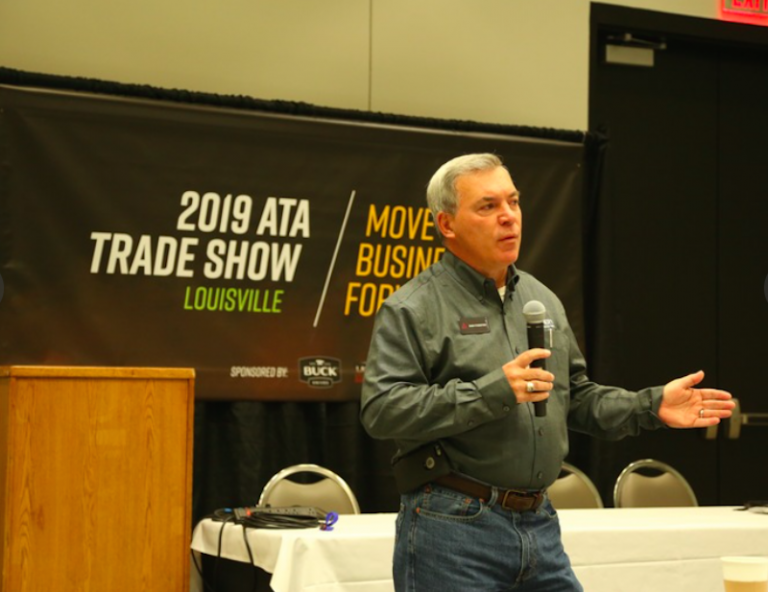Trade Show
ATA, Agencies and Lawmakers Tackle Industry Challenges
The Pittman-Robertson Act goes another year without action.
Photo Credit: ATA
The ATA’s push to let state wildlife agencies use Pittman-Robertson Act funding to boost hunting participation and build shooting ranges ended in frustration for the second straight year when lawmakers left Washington in December without acting on the popular idea.
Dan Forster, the ATA’s vice president and chief conservation officer, has helped spearhead efforts in Washington, D.C. to get Congress to pass the Pittman-Robertson Modernization Act. Forster said everyone working in state wildlife agencies, the U.S. Fish and Wildlife Service, and shooting-sports industries supports the proposal. Further, lawmakers in the U.S. Senate and House of Representatives like the idea and want to see it become law.
Unfortunately, time ran out again for lawmakers, who couldn’t pass the bill before their Christmas break. Forster said lawmakers think they can revive the bill early in the new Congressional session, but nothing is certain in Washington, given the protracted government shutdown and many new Congress members.

Dan Forster gives a seminar on the ATA's Deer Protection Program. Photo Credit: ATA
“It’s still going to be a challenge,” Forster said. “Things always are in Washington. We’re now dealing with many different players than before, so it’s hard to predict if we’ll succeed this year. But this is a popular idea that makes sense to everyone who looks at it.
“When the Pittman-Robertson Act passed in 1937, no one envisioned a time when they’d need to promote hunting participation and build more shooting ranges,” Forster continued. “Hunting was a way of life for rural residents, and most people who hunted could shoot someplace close to home. They didn’t need more shooting ranges back then.”
The Pittman-Robertson Act imposes federal excise taxes on manufacturers when they sell firearms, ammunition, bows, arrows and bow/arrow accessories. The F&WS then distributes those funds to states to use for public hunting grounds, wildlife habitat work, and hunter education programs.
If the modernization bill becomes law, agencies could use some of those P-R funds to promote hunting through “R3” programs that “recruit, retain and reactivate hunters and bowhunters.
Forster, ATA CEO/president Matt Kormann, and ATA Board members encourage ATA members to contact their U.S. senators and congressional representatives to support the Modernization Act.

The Action Alert System will allow members to become aware of bills in Congress that may affect their future. Photo Credit: ATA
When Forster addressed the ATA Board of Directors on Wednesday in Louisville, Kentucky, where they were gathered for the annual ATA Trade Show, he discussed other priorities for the year ahead.
1. Action Alert System: The ATA now has an “action alert system” to alert its members of legislative actions that could affect their business. “By alerting our members and explaining the situation quickly, they can let their legislators know if they support or oppose specific policies they’re considering,” Forster said. “This is a powerful tool for our members, and gives them an informed, timely voice for working with lawmakers.”
2. High-Level Meeting: Forster and other members of the Outdoor Recreation Roundtable met Jan. 8 in Washington, D.C. with George Ervin Sonny Perdue, secretary of the U.S. Department of Agriculture. The Roundtable – which represents the nation’s many outdoor-recreation industries ranging from hunting and fishing to camping, boating and snowmobiling – talked with Perdue about access to National Forest lands and the U.S. Forest Service’s management priorities.
3. Bowhunting Equipment Rules: The ATA continues to work with state wildlife agencies to craft minimum equipment standards for bowhunting gear. States have always created their own rules on bowhunting equipment, and those rules grew increasingly varied as technologies changed in recent decades. The ATA does not want to tell states which standards should apply, and how to apply them. Rather, it formed a working group to compile the equipment regulations from all states, and then study them so it can find a starting point and consensus for minimum standards.
Those details could include discussions on minimum draw weights, lighted nocks, arrow lengths, broadhead diameters, compound-bow let-offs and other variables. “The whole idea is to simplify regulations wherever possible,” Forster said. “We don’t want to impose our will on any state. That won’t work anyway. We hope to show each state how their regulations compare to other states, and where they might want to adapt their rules to better accommodate their bowhunting customers.”
4. Forster is disappointed to see Ryan Zinke depart as secretary of the U.S. Department of the Interior. “We had an excellent relationship with Sec. Zinke, but change is inevitable in Washington, D.C., so we’ll adapt,” Forster said. “We also have a fantastic relationship with the Fish and Wildlife Service. We’re looking forward to working with the incoming secretary, Aurelia Skipwith. We’re confident we can make progress on issues concerning our members.”

WE ARE HERE TO HELP THE INDUSTRY, TO HELP INDIVIDUAL BUSINESSES GET THE MOST OUT OF THE INDUSTRY, AND TO HELP YOU.